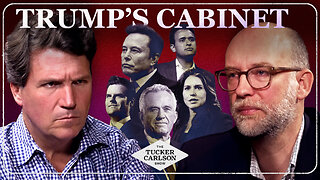Premium Only Content

How a CANNON was Made And How It Works
Cannon ball how its made and how it works
A cannon (plural: cannon or cannons) is any piece of artillery that uses gunpowder or other usually explosive-based propellants to launch a projectile, which may or may not be explosive. Cannon vary in caliber, range, mobility, rate of fire, angle of fire, and firepower; different forms of cannon combine and balance these attributes in varying degrees, depending on their intended use on the battlefield. The word cannon is derived from several languages, in which the original definition can usually be translated as tube, cane, or reed. In the modern era, the term cannon has fallen into decline, replaced by "guns" or "artillery" if not a more specific term such as "gun", "mortar" or "howitzer", except for in the field of aerial warfare, where it is often used as shorthand for autocannon.[1]
The Greeks invented the first type—a steam cannon—designed by Archimedes during the Siege of Syracuse. Ctesibius built a steam cannon in Alexandria and in the fifteenth century Leonardo da Vinci designed another, the Architonnerre, based on Archimedes' work. The earliest form of gunpowder artillery was developed in Song China, over time replacing siege engines and other forms of aging weaponry. In the Middle East, the first use of the hand cannon is argued to be during the 1260 Battle of Ain Jalut between the Mamluk Sultanate and Mongol Empire. The first cannon in Europe were in use in the Iberian Peninsula by the mid-13th century. It was during this period, the Middle Ages, that cannon became standardised, and more effective in both the anti-infantry and siege roles. After the Middle Ages most large cannon were abandoned in favour of greater numbers of lighter, more manoeuvreable pieces. In addition, new technologies and tactics were developed, making most defences obsolete; this led to the construction of bastion forts, specifically designed to withstand artillery bombardment though these too, along with Martello towers, would find themselves rendered obsolete when explosive and armour piercing rounds made even these types of fortifications vulnerable.
Cannon also transformed naval warfare in the early modern period, as European navies took advantage of their firepower. As rifling became commonplace, the accuracy and destructive power of cannon was significantly increased, and they became deadlier than ever, both to infantry who belatedly had to adopt different tactics, and to ships, which had to be armoured. In World War I, the majority of combat fatalities were caused by artillery; they were also used widely in World War II. Most modern cannon are similar to those used in the Second World War, although the importance of the larger calibre weapons has declined with the development of missiles.
Cannon was widely known as the earliest form of a gun and artillery, before early firearms were invented.
-
 12:14
12:14
DeVory Darkins
8 hours ago $20.33 earnedBill Maher TRUTH BOMB Triggers HEATED Argument on The View
48.2K68 -
 31:58
31:58
The Officer Tatum
5 hours agoThe View LASHES OUT On Morning Joe For MEETING WITH Trump
34.8K53 -
 1:37:46
1:37:46
Kim Iversen
11 hours agoJoe Biden’s Post-Election Revenge: WW3 | Democrats Tremble Over Matt Gaetz and RFK Jr, Form “Shadow Cabinet"
118K125 -
 1:47:09
1:47:09
Fresh and Fit
11 hours agoGuy Crashes Car Working Uber?! Money Monday Call In Show!
75.9K10 -
 1:48:50
1:48:50
Glenn Greenwald
11 hours agoDC Attacks Trump's Most Disruptive Picks; Biden Authorizes Massive Escalation With Russia; Joe & Mika Meet With "Hitler" | SYSTEM UPDATE #367
168K184 -
 1:44:34
1:44:34
Tucker Carlson
11 hours agoTucker Carlson and Russ Vought Break Down DOGE and All of Trump’s Cabinet Picks So Far
207K270 -
 1:42:47
1:42:47
Flyover Conservatives
1 day agoBO POLNY | The Best and Worst Times Are Coming – Are You Ready? | FOC Show
58.1K20 -
 51:12
51:12
BIG NEM
13 hours agoWelcome to Our Uncensored Show: Trump, Simulation Theory & the Albanian Mob - EP1
65.8K17 -
 2:05:14
2:05:14
Robert Gouveia
12 hours agoFBI Criminals Get LAWYERS; STOP Counting ILLEGAL Votes; Time to Disbar Tish James
82.6K109 -
 1:00:30
1:00:30
The StoneZONE with Roger Stone
11 hours agoAre We Heading For World War III? General Michael Flynn Joins The StoneZONE w/ Roger Stone
58.2K14